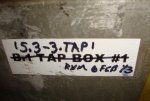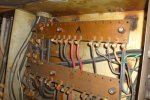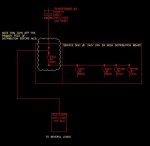paawwlwall
Member
I am working on an industrial building and have run across something that I am not sure is permitted by code or not. They have several items labeled as "Tapbox's" and I am trying to find where in code this is permitted and the guidelines if it is permitted. I have attached a picture to try and explain what is going on...
I know there are issues going on with over-current protection a lot of these feeds from the "tapbox" are going to MLO panels.




Any help would be greatly appreciated.
Thanks
I know there are issues going on with over-current protection a lot of these feeds from the "tapbox" are going to MLO panels.




Any help would be greatly appreciated.
Thanks


